Everyone knows a book cover is one of the most important parts of your marketing. But what does it really take to create a good, on-genre cover? That's what Alliance of Independent Authors partner member, Jessica Bell takes over the blog today as she explains what is working in 2022.
 Fix Your Cover Competition #SelfPubCon22
Fix Your Cover Competition #SelfPubCon22
Not happy with the cover of your book? Submit your published book cover to the Fix Your Cover competition at #SelfPubCon22!
Silver sponsor, Damonza.com are welcoming submissions of your published book covers in desperate need of a make-over!
Three runners-up will win a FREE book cover improvement (eBook/front cover only – worth $95). The overall winner will receive a FREE complete book cover redesign (eBook and paperback – worth $795).
Entry will open at #SelfPubCon22 on 29th October at 10am and will close at 10am on 1st November 2022 (UK time).
If you'd like to find out more about Damonza.com you can see more about their cover design here and their cover improvements here.

Jessica Bell – author of “Can You Make the Title Bigga”
Indie Author Book Cover Design: What Works in 2022
Jessica Bell is an Australian multi-award-winning author/poet, a highly sought-after and award-winning book cover designer who is recommended by Dave Chesson of Kindlepreneur, Makeuseof.com, John Fox of Bookfox, and more. She is also a singer-songwriter.
You can find out more about Jessica on her website and publishing website, Facebook and Twitter
Note that some of this article is an adapted extract from Jessica's new book.
Great covers sell books. Bad covers don’t sell books.
This is probably the first thing you need to tell yourself before making a mistake and publishing a book with a subpar cover. Don’t have the budget? Then wait until you do. Because, trust me, publishing your book with a bad cover so that you can make money to buy a better cover DOES NOT WORK. Not to mention that this may sully your reputation. I have lost count of the times I’ve seen authors remorsefully admit defeat on social media, explaining why they’ve decided to discard their self-made covers and fork out the dosh for a professional design. These kinds of posts usually start with “I wish I had have known then what I know now.”
So, you want to see some great book covers that sell books, right? I know, I know, you’ll get them, but first, let’s answer a very important question that is often skimmed over:
Why is a book cover so important?
Let’s begin with a few hard-hitting anecdotes.
Have you ever had a friend ask you to read and review their book on your blog or website with a terribly designed cover they thought they’d just quickly whip up in Canva? And while you didn’t have the heart to tell them that the title was indecipherable above the multicolored photo of a crowded farmer’s market in Marrakesh, you still cringed every time you looked at it. You even felt embarrassed when you had to post it on your blog with your glowing review because the cover just did not do the brilliant book justice?
I have.
Has a friend ever given you a book and said, “It’s brilliant, read it?” And has that book been sitting in your to-be-read pile for years because every time you pick it up and consider reading it, you look at the cover and for some reason change your mind?
I have.
Ever been so in love with a book cover that you couldn’t resist buying the book? And when you read the book, it was nothing at all like you expected and ended up disappointed even though it was technically a good read?
I have.
Now let’s break down these three examples of unsuccessful book covers.
- This example reflects an unattractive cover design that will put people off buying the book and will therefore miss out on a read that they might have thoroughly enjoyed.
- In this example, there’s nothing particularly wrong with the design, but there’s nothing special about it either. Perhaps this book will be bought because of its reputation. But will it actually be read and reviewed? And if it’s not read and reviewed, will those people ever buy this author’s next book?
- Wow. This sounds like a successful book cover design. This book has sold thousands of copies because the cover is so enticing. But there’s a problem. All the review sites have lots of 2 and 3-star ratings. And is this because the book was bad? Maybe not. But maybe the cover was giving a false impression of its contents. Maybe the cover showed steamy romance, but the romance ended up being a real-to-life domestic struggle to keep a marriage alive and avoided sex. Are you willing to jeopardize your reputation for income? Yes, sex sells, but think wisely. Because you may not be so lucky with your next book.
So, what’s the collective moral of these stories? Try to get it right the first time.
The book’s cover is the first thing a potential reader will typically see, even before reading the description. It’s important because it’s a reader’s very first (and uninfluenced) impression of your book. Don’t judge a book by a book cover? Bollocks. This is the real world, and you want the book to sell. In this digital age, those first impressions could last as little as a split second as potential readers scroll down a webpage or social media profile. You need to catch their eye. Now. Dear writer, publisher, graphic artist, business person: first impressions always count. And they can stain.
That’s not to say that there aren’t exceptions. Sometimes you get a second chance. Especially if you’re updating your covers to match current trends in the market.
So, the information you’ve all been waiting for…
What works in 2022?
I know you’re going to hate hearing this, but as much as you like to believe that the content of your book should speak for itself, it doesn’t. Your book cover speaks for your work. If you don’t nail your book cover and cater to your target audience’s desires, you jeopardize the success of your book.
Simply put, what works in 2022 is following trends. Do your research and ask yourself, “What is my target audience going to be attracted to? What are some titles that my kind of reader has likely read?” Look at those covers. Look at the covers of bestsellers, both indie and traditional. Take note. Readers buy what they recognise as something they’ll enjoy. They don’t have to love the cover (though it does help), but they do have to be attracted to it enough, for whatever reason, to pick it up.
For example, a client of mine, Melissa Addey, has updated the covers for two series with me. The makeovers have done so well, that she’s commissioned me to redesign a third series of hers.
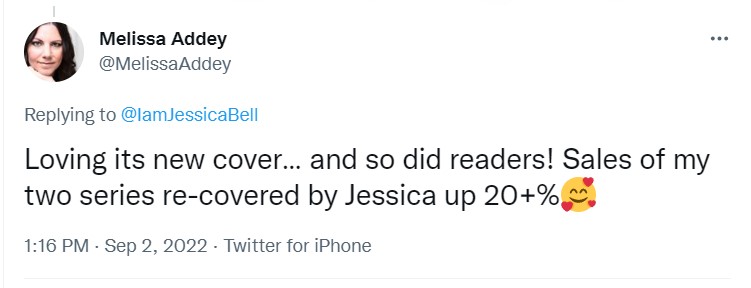 And what was the trick? Following current trends.
And what was the trick? Following current trends.
Here are the makeovers. The top rows are the orignals and the bottom rows are the new ones:
The Forbidden City series
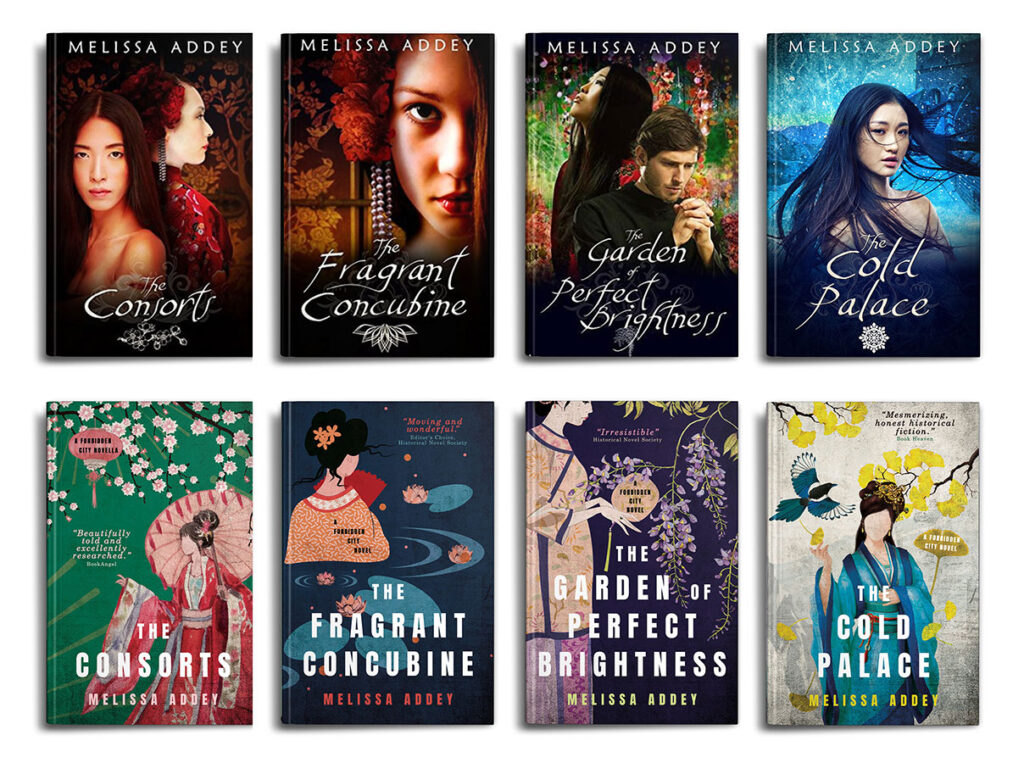
The Moroccan Empire series
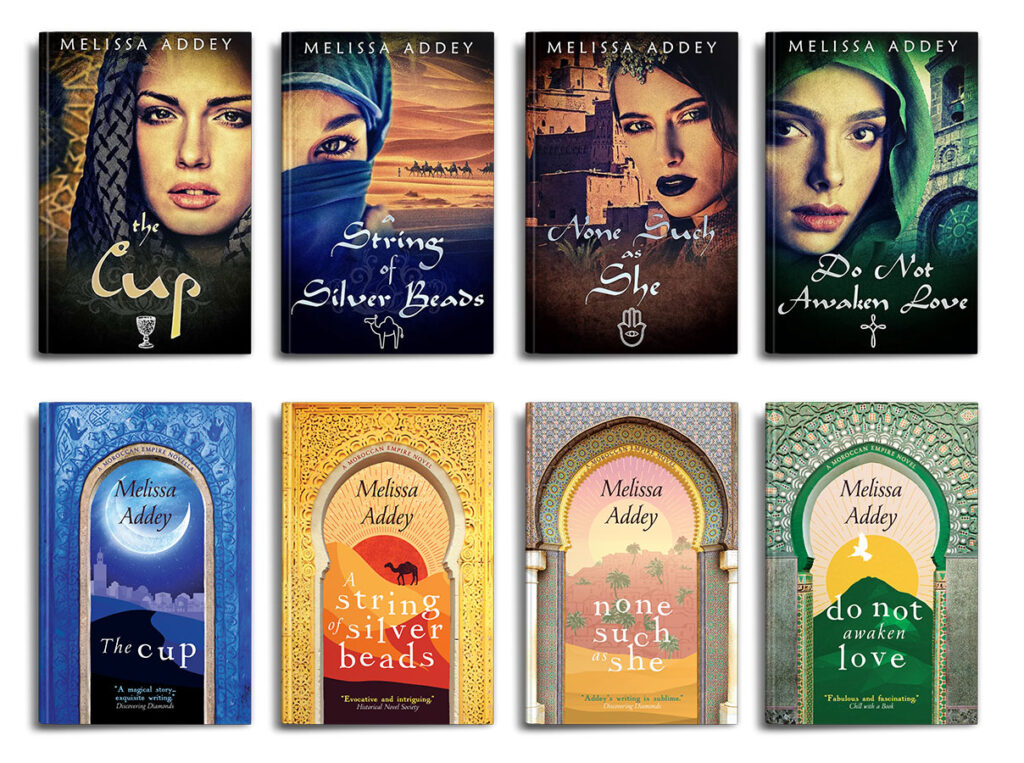
If you want your books to sell, consider the data.
I do know there are many covers out there that follow a tried and tested formula, that aren’t particularly special in any way. I find that these kinds of covers are commonly used for genres that are binge-read, like romance, crime, and thriller. And you may be asking yourself, why? Why should I do this? If you want to publish your book just for the fun of it, then, honestly, do what makes you happy and fulfils you creatively without worrying about it. But if you want to give your books the best chance of selling, and you want to earn a decent income from your books, you need to consider the data.
I can’t tell you how tired I am seeing shadowy silhouettes and bold lettering on thriller covers. But the trend works, and it catches the eye, so use it. Maybe your designer can rework the trend into something that is a little different and more to your liking, but still hits your target audience right on the nose. Here’s a thriller cover I designed for Dave Sivers, that I adore. I do feel it has a certain something different than what’s currently out there.
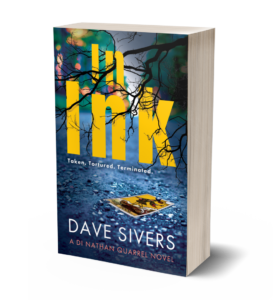
In Ink by Dave Sivers
Keep in mind though, that these trends only work until a new trend is born, so you have to keep on top of it. For example, since I started my career as a book cover designer, I’ve seen historical fiction covers with headless women, women walking away from the reader, and the bold and illustrated (the trend I adopted for Melissa’s covers).
Maybe your book can be the catalyst of another trend?
So how do you really know what your reader wants?
You don’t, but you can make a pretty good educated guess. Just for a moment, put yourself into the shoes of a reader browsing through a physical bookstore (because thankfully, they still exist!) What thoughts go through your head when you are inclined to pick up a book and read the back cover?
For me, as a fan of literary and speculative fiction, memoir and mind, body, spirit nonfiction (I love books about the brain!), it’s something like the following:
FICTION
… oh, this reminds me of …
… oh, this looks like a good character-driven read for a rainy day …
… hmm, this might be too soppy, I want a bit of grit, pass …
… ooh, this looks like something I could enjoy over summer …
NONFICTION
… oh, this looks like an entertaining take on the subject …
… hmm, too authoritative and bland, I want sassy! …
… oh, that looks like advice I could benefit from …
… hmm, I don’t think I could take this author seriously …
What are my thoughts dripping with? Expectation.
So how do we strike a balance between meeting a reader’s expectations and fulfilling an author’s expectations?
As an author, try to keep an open mind, and understand that your book cover designer knows what they are doing and what readers want. A designer doesn’t only want to create something beautiful for a bookshelf, they want to create something that functions. And that function is to entice and sell.
I understand, as a writer myself too, that marketing is a secondary consideration. When I started out as an author, I thought that I’d just be able to hire someone else to do it, and forget about it. You can hire someone else to do it, but you can’t forget about it.
One of the greatest pieces of advice I can offer you as an author regarding book cover design is: don’t fight it if you don’t understand it.
For more of my book cover designs, check out my design website jessicabelldesign.com and my publishing house website vineleavespress.com. Or you can find out more about book design in my new book Can You Make the Title Bigga?


 Fix Your Cover Competition #SelfPubCon22
Fix Your Cover Competition #SelfPubCon22
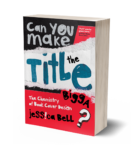



Excellent piece of writing! Moreover, your video is just fantastic.
Self-publishing authors need to be disciplined and patient when it comes to cover design in order to set their books up for the best chance of success.
I found the post to be exceptionally informative, and I greatly appreciate the shared insights.
I really love The Moroccan Empire series. The covers of all books of this series are impressive.